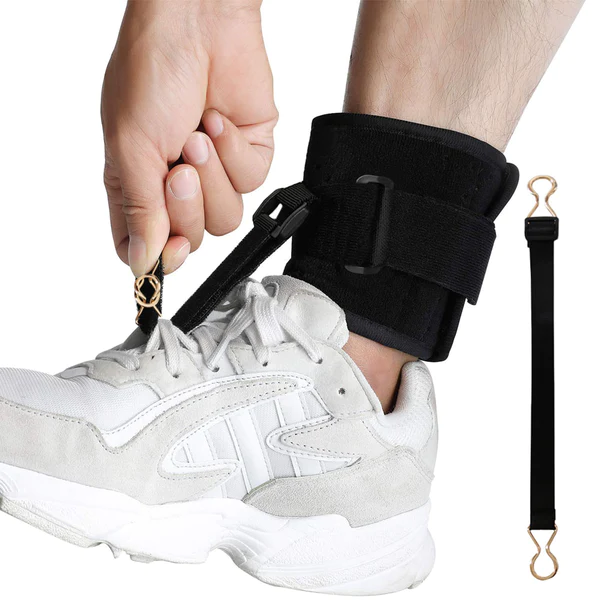
The benefits of using an ankle brace
Share
Do you have a weak ankle due to a recent injury or ankle surgery? If so, you should explore the benefits of ankle braces. It helps you recover and provides the stability you need when running, exercising or in everyday life.
An ankle brace is a protective orthopaedic device that provides support to the ankle, accelerates healing, and prevents injury or reinjury. Modern braces are lightweight and consist of fabric, plastic and metal components that fit easily and comfortably around the affected limb. Some are secured with laces or Velcro and have some degree of compression to limit ankle swelling.

Benefits of Ankle Support
In general, ankle braces keep your foot and toes pointing forward and prevent your foot and ankle from rotating or twisting inward. Most ankle sprains (stretching and tearing of ligaments, tendons, and other soft tissues) occur when you suddenly twist or rotate the ankle when you are walking down the curb or stairs, or running on uneven surfaces.
When an ankle is injured, coaches, primary care physicians, orthopedists, and podiatrists often recommend that patients wear an ankle brace to support the joint and prevent further injury. The brace also limits the development of scar tissue and arthritis, and reduces acute and chronic pain.
Ankle braces are aids after casting, surgery, physical therapy, sports, targeted training and other types of medical interventions. A podiatrist may recommend an ankle brace if:
-
Ankle fracture
- hind foot fracture
- Ankle Sprains and Repeated Sprains
- Ankle instability from arthritis, sprains, and obesity
- poor balance
- Dysfunctional gait, such as ankle tiptoes or repeated inward rotation
- Rheumatoid and Osteoarthritis
- gout
- Achilles tendonitis
- Avoid or delay ankle fusion or replacement surgery due to advanced arthritis
Types of ankle braces
Compression braces: Also known as elastic braces, compression braces are commonly used to treat mild ankle sprains and tendonitis. These types of braces are made from a lightweight stretchable material that allows normal rotation and movement of the ankle. They are designed to provide joint support, enhance balance and reduce swelling. The compression brace also helps keep the ankle joint warm and reduces muscle stiffness. They can usually be worn on the right or left ankle and are usually sold by shoe size.
Lace Stand: The lace stand is semi-rigid. They are used to treat mild to moderate ankle sprains. The lace brace restricts the joint's side-to-side and up-and-down movement. They provide more support than compression brackets, and most types fit the shoe. Like compression braces, they are designed to be used on the right or left ankle.
Hinged Brackets: The hinged brackets are also semi-rigid. They prevent the ankle from rolling side to side, but do not hinder up and down movement. Hinged braces usually have padded sides for comfort and velcro straps so they can be easily adjusted or removed. Unlike lace-up or compression ankle braces, articulating braces are designed to fit the right or left ankle.
Rigid braces: Doctors often prescribe rigid braces for athletes or active individuals to help them recover from ankle sprains or stress fractures. This type of ankle brace is made of hard plastic that extends up the sides of the ankle and is secured with velcro straps. While rigid braces provide excellent support, they may not fit inside shoes. Depending on the situation, the doctor may recommend that the patient switch to a less restrictive brace after the ankle begins to heal.
After a podiatric evaluation, you and your foot and ankle doctor at the South Texas Podiatry Group will decide which ankle brace is best for you. There are several types, and many can be customized to meet your specific needs.
The most common ankle braces are simple cloth wraps. Available over the counter, the sleeves provide compression and ankle stability.
Band braces also provide stability. They are a great alternative to traditional ankle straps and can be easily adjusted for a looser or tighter fit as needed.
The stirrup brace supports the ankle after a serious fracture or surgery. They are true long-wear rehabilitation devices.
Finally, hybrid braces combine the features of multiple braces. They may include velcro straps and laces and are very stable and easy to wear for extended periods of time.










